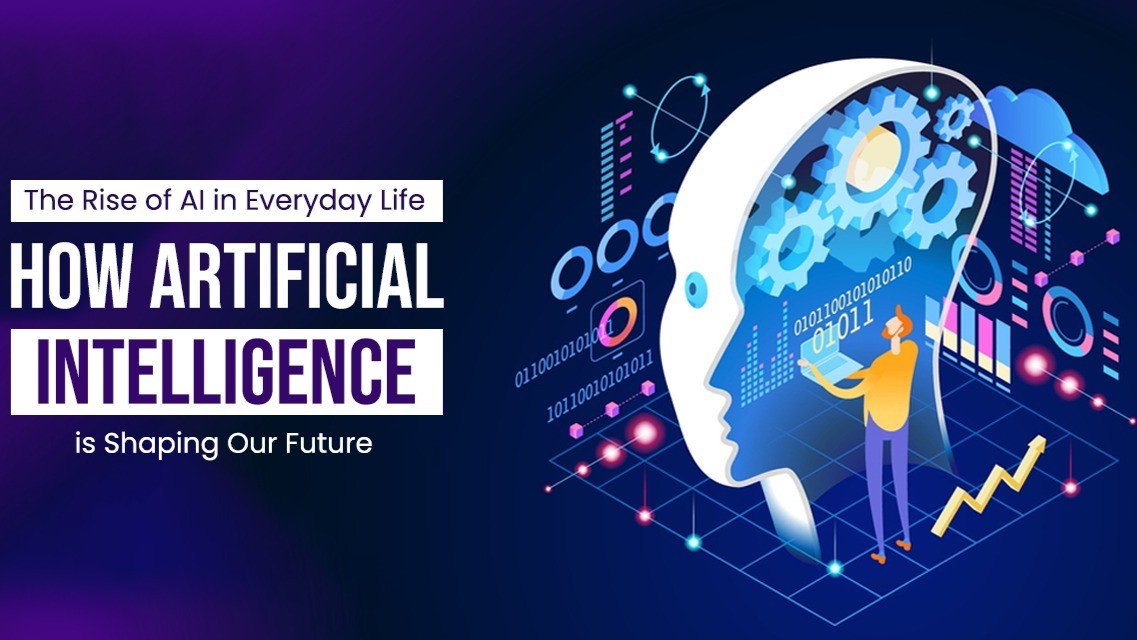Artificial Intelligence (AI) is no longer a concept of the future—it has become an integral part of our daily lives, blending seamlessly into our routines. From virtual assistants to smart home devices, AI is quickly transforming the way we engage with the world around us. Its rise has been meteoric, making its way into industries, personal routines, and even how we capture memories. For instance, have you ever wondered how software can unblur image and make it look crisp and clear again? This is just one of the countless examples of how AI is making complex tasks simple and accessible for everyone.
In this blog, we’ll explore how AI is changing our daily lives, reshaping industries, and what the future holds for this ever-evolving technology. Let’s delve into the various ways AI is revolutionizing the world around us.
1. AI in Daily Communication and Connectivity
The most evident way AI impacts our daily lives is through the devices we use to communicate. Think about it—how often do you interact with voice-activated assistants like Siri, Alexa, or Google Assistant? These technologies use AI-driven algorithms to understand and respond to our requests, making our interactions more efficient and hands-free.
AI’s Role in Social Media
Social media platforms like Facebook, Instagram, and Twitter use AI to personalize our feeds, recommend content, and filter out inappropriate material. AI algorithms analyze user behavior, preferences, and interactions to deliver content that aligns with individual interests. This creates a more engaging and tailored social media experience, keeping us connected with what matters most.
- Example: Facebook uses AI for facial recognition, enabling it to suggest tags in photos by identifying people automatically.
Smart Email Management
AI is also embedded in our email inboxes. Tools like Gmail use machine learning to filter spam, categorize emails, and even predict the most appropriate response through smart replies. This saves time and ensures that we stay on top of our communication effortlessly.
2. AI in Photography and Media Editing
One of the most fascinating advancements in AI is its ability to unblur images, restoring clarity to pictures that would otherwise be considered unusable. Whether it’s sharpening the details of a blurry vacation photo or refining a low-quality image, AI-driven tools can enhance photo quality in ways that were unimaginable a few years ago.
Unblur Image Technology
AI-powered photo editing software, such as Adobe Photoshop and Image Upscaler, employs deep learning techniques to analyze pixel patterns and enhance image quality. These tools are particularly useful for photographers, graphic designers, and even everyday users who want to salvage their precious memories.
- How It Works: AI algorithms identify the edges and features in an image, predict how they should look if the image were clear, and reconstruct the details. This process can significantly enhance image quality, turning a blurry shot into a sharp, professional-looking picture.
AI in Video Editing
Similarly, AI is making waves in video editing. Software like Magisto and Lumen5 uses AI to automatically edit video clips, add transitions, and even select appropriate music, making video creation more accessible to everyone, even those with little editing experience.
3. AI in Healthcare and Wellness
The healthcare sector is witnessing one of the most transformative impacts of AI. From diagnosing diseases to managing patient care, AI is enhancing the efficiency and accuracy of healthcare services, ultimately saving lives.
AI in Diagnostics
AI-powered diagnostic tools can analyze medical images, such as X-rays and MRIs, with incredible precision. This enables faster and more accurate detection of health conditions like tumors, fractures, and even early signs of diseases. For instance, IBM’s Watson Health uses AI to analyze vast amounts of medical data, providing doctors with insights that help in diagnosing and treating patients more effectively.
- Predictive Analytics: AI algorithms can predict potential health issues by analyzing patient history and lifestyle data, allowing for early intervention and preventive care.
Virtual Health Assistants
AI-driven health assistants, such as Ada and Your.MD provides users with personalized health assessments based on symptoms entered into the app. These virtual assistants help individuals understand their symptoms, suggest possible conditions, and even recommend when to seek medical attention.
4. AI in Transportation and Mobility
AI is revolutionizing how we travel, making transportation safer, faster, and more efficient. Self-driving cars, smart traffic management, and predictive maintenance are just a few examples of how AI is changing our mobility landscape.
Autonomous Vehicles
Companies like Tesla, Waymo, and Uber are at the forefront of developing self-driving cars that use AI to navigate roads, recognize obstacles, and make split-second decisions. These vehicles rely on sensors, cameras, and machine learning algorithms to process real-time data, ensuring safer and more efficient driving experiences.
Smart Traffic Management
AI is also used in managing traffic flow in urban areas. Cities around the world are implementing AI-driven traffic lights that adjust in real time based on traffic patterns, reducing congestion and minimizing travel time.
- Predictive Maintenance: AI can analyze data from vehicles to predict potential mechanical failures, allowing drivers to address issues before they escalate into costly repairs or accidents.
5. AI in Finance and Banking
The financial sector is another domain that has fully embraced AI. From fraud detection to personalized banking experiences, AI is reshaping how we handle our finances.
Fraud Detection and Prevention
AI algorithms can detect unusual patterns in financial transactions, helping to identify and prevent fraudulent activities. Banks and financial institutions use AI to monitor transactions in real time, flagging suspicious activities and protecting customers from potential fraud.
Personalized Banking
AI-driven chatbots, such as those used by Bank of America and Wells Fargo, provide 24/7 customer support, answering queries, processing transactions, and even offering financial advice. This makes banking more accessible and convenient for customers, eliminating the need for long wait times or in-person visits.
6. AI in Shopping and E-Commerce
AI is transforming the shopping experience, both online and in physical stores, by making it more personalized, efficient, and enjoyable.
Personalized Recommendations
E-commerce giants like Amazon and Alibaba use AI algorithms to analyze customer behavior, purchase history, and preferences to offer personalized product recommendations. This not only enhances the shopping experience but also increases the likelihood of purchase, much like how a caliper assessment analyzes an individual’s traits to provide tailored insights in the hiring process.
Virtual Shopping Assistants
AI-powered chatbots and virtual shopping assistants guide customers through their shopping journey, answering questions, providing suggestions, and even assisting with checkout processes. This creates a seamless and engaging shopping experience that feels tailored to individual needs.
Conclusion
The rise of AI in everyday life is not just a trend—it’s a transformation that is here to stay. As AI continues to evolve, it will become even more ingrained in our daily routines, making tasks easier, improving efficiency, and enhancing our overall quality of life. From unblur image technology to personalized shopping experiences, AI is proving to be an indispensable tool that enriches our lives in countless ways.
While the future of AI is exciting, it also brings challenges that we must address, such as ethical considerations, job displacement, and data privacy concerns. However, if we harness the potential of AI responsibly, it has the power to revolutionize our world for the better, making it smarter, more connected, and infinitely more capable than ever before.
By embracing AI and its endless possibilities, we are not just witnessing the rise of technology—we are living through a revolution that is redefining what it means to be human in a digital world.




